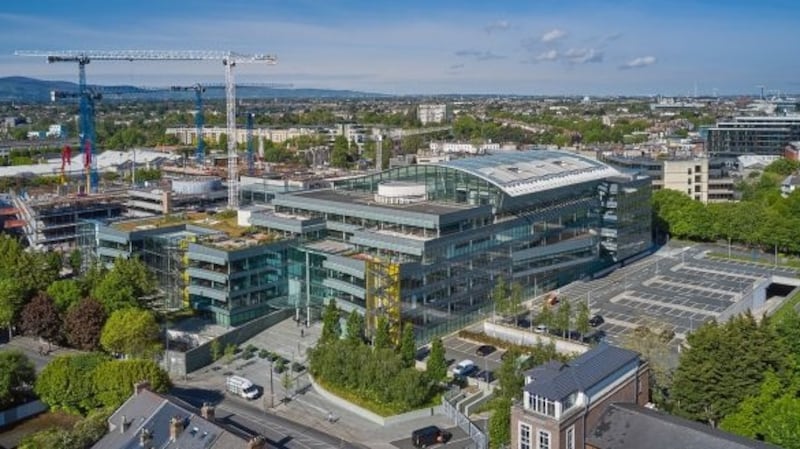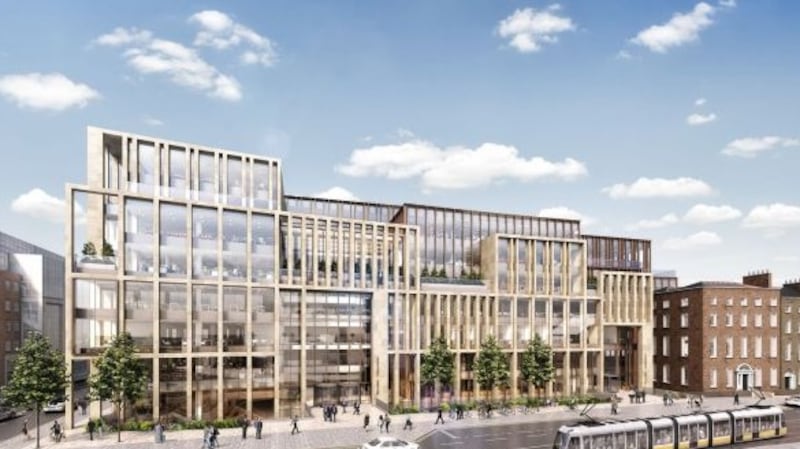We’ve had the “great resignation”, then the “great reshuffle” but for office workers, is now the time – finally – for the “great return”?
With the Covid-19 pandemic finally appearing to lose its impact, office workers have once more been given the thumbs up to return to their places of employment by Taoiseach Micheál Martin.
For many office workers, it has been almost two years since they sat with their co-workers – or at least since they did so with any great regularity.


While some will race back, others, buffeted by no commuting time, cheaper lunches and the absence of pesky colleagues, may be more reluctant to return.
The question then perhaps is, can the office as we know it survive in a future which may be dominated by hybrid and remote working?
The office is dead. Long live the office!
The past two years has undoubtedly had an impact on the office market. Figures from Knight Frank show that total office investment came to €1.5 billion in 2021, while total office take-up reached just over 1.63m sq ft. “An excellent out-turn” says Joan Henry, chief economist and head of research with Knight Frank Ireland, given the extent of lockdowns during that period.
But one that is still far short of where it once was.
Overall investment for example is down significantly on the €3.1 billion invested in 2019, while the office take-up is also down considerably on the 3.9 million let in 2018, and the 3.3 million in 2019.
The vacancy rate also shot up during the pandemic – from about 6 per cent, pre-Covid, to a peak of 10.6 per cent in the middle of 2021.
Rents fell too, down to about €57.50 per sq ft from more than €60 pre-pandemic.
However, while it may be down, the office market is far from out.
For John Moran, chief executive and head of capital markets with JLL in Ireland, the pessimism was unwarranted.
“I always felt the death of the office was overdone and premature,” he says.
Indeed a number of high profile deals last year, such as the €395 million sale of Facebook’s Ballsbridge campus to Blackstone, as well as TikTok’s agreement to lease the entire 210,000sq ft Sorting Office, illustrate the high level of interest in prime Dublin office space.
Already, in another mark of confidence, the supply of so-called “grey space” or offices ready for occupation, has fallen, from a high of about 1.1m sq ft to 1m sq ft and Knight Frank expects it to fall further.
Unsurprisingly then, the vacancy rate has also started to turn, down to 9.8 per cent for the fourth quarter of 2021. Knight Frank expects it to continue to decline in 2022.
Also, the drop in rents wasn’t as deep as had been feared.
“We thought rents would go further south,” says Moran.
Now Knight Frank is forecasting that prime rents will reach €62.50per sq ft by mid-year and €65 per sq ft by the end of the year, up by 13 per cent on 2021. With the market having been on hold for much of the past 24 months Henry says the scene is now set for a “potential race for space, particularly in the city centre”.
Hybrid working
It’s a notably positive outlook given many people will never use their offices as they once did.
“I think there’s broadly an acceptance that we’re going to operate in a sort of hybrid model,” says Moran, adding, “I don’t see buildings going back to 100 per cent occupancy”.
Indeed professional services firm Pwc, for example, has told its staff to expect to be in the office for two to three days a week on average, post pandemic, while some employers have gone fully remote. Back in 2020, in the early days of the pandemic, recruitment group Indeed said it would allow the “vast majority” of its 1,000 Irish employees to work from home forever.
“Everyone rightly assumes there’ll be a hybrid working model moving forward, but from one company to another it will be very different,” says Shane Duffy, director of offices with Savills Ireland. “What works for one company may not work for another.”
It will take a while until more clarity returns. As Duffy notes, “Everyone’s looking around to see what everyone else is doing”.
Already since the restrictions on office working, among other things, have been lifted, Moran is seeing a “significant upsurge” in occupier activity, as companies again start to consider just what sort of space they need.
What will happen next is businesses will start analysing how their space is being used and then make decisions. This could see more space being assigned for hot desks, or a reduction in desk space in favour of meeting spaces.
“There is always going to be a need for an office, a requirement for some base point for occupiers to come and meet. Will it be full of linear desks like before? Probably unlikely,” says Duffy, adding that the office will be more about a space to congregate and socialise.
This new approach may not, however, mean a reduction in space.
“We haven’t seen a huge amount of people trying to downsize,” says Moran, “but what we are seeing is people maybe not over-committing to space the way they did in the past”.
Take professional services firm KPMG. Pre-Covid, it went to the market looking to lease 320,000sq ft; in the end it transacted almost 290,000sq ft, so a 10 per cent decrease. Not a huge reduction then, given the experience of the past two years – and it still has an option to lease up to a further 48,500sq ft.
It is this flexible approach, with an option of ramping up or down as the business needs it, that we’re likely to see more of.
“Alienation clauses [which allow tenants to sub-let or not] are going to be particularly important going forward,” says Duffy, noting “what’s relevant right now may not be relevant in two/four years”.
In the future then, companies may look to take an option of further space, or seek out flexible work spaces that allow them to ramp up or down as they need it. Companies are also likely to want shorter lease terms.
There may also be a further dichotomy between newer, ESG (environmental, social and governance) compliant buildings, and older stock.
“We’re undoubtedly going to see a brand discount,” says Moran.
There is also a differential in demand for property in central business districts and further afield. In the suburbs, the outlook “is a little bit trickier” concedes Duffy.
A compulsion to return to the office may also emerge over time. With most people working from home in an organisation, the sense of missing out was not an issue. Now, with one cohort in the office, and another potentially at home, there could be more of a pull to spend time with colleagues – especially if those colleagues are seen to being treated better.
“There is a huge appetite amongst the younger generation to get back into an office in some capacity, to be there and learn from tCan demand for office space withstand the move to hybrid working?heir peers,” says Duffy, noting that “out of sight is out of mind” might become an issue in dividing those who stay at home and those who come to the office.
On the other hand, if companies and their employees fully embrace the remote model, what will this mean for companies like Indeed who have offices at St Stephen’s Green and Sir John Rogerson’s Quay? Will it continue to retain such expansive office space? The company has previously indicated it would revisit leases as they come up for renewal.
City centres
Another great unknown is what’s going to happen to all those cafes and coffee shops that have been bolstered thus far by Government pandemic subsidies. When these finally come to an end, will there be enough people around to ensure their viability? After all, if the hybrid model is the dominant one, an employee who is only at their desk for three days a week will only be spending 60 per cent of what they previously did on lunch and coffees.
Already this has started to hit home.
On St Stephen’s Green, Hatch & Sons, the cafe owned by Peaches and Domini Kemp recently closed, due to a collapse in revenues. The sisters attributed this to “simply not enough tourists or office workers to sustain sales in any meaningful way”.
On Pearse Street, Eimer Rainsford, owner of Honey Truffle, a cafe offering delectable lunchtime treats for the office crew has weathered the storm of the previous two years.
“The last two years have been a rollercoaster,” she says, noting the importance of Government subsidies in keeping the business running. Now she’s happily eyeing up queues returning to her premises – “We haven’t had that in a long time” – but remains cautious about just how the return to the office will play out.
On the one hand, she notes a number of businesses that have pulled out in the vicinity, “I get concerned about that”, but on the other hand, she’s noted an uptick in younger people who are seeking out a return to the office, while there is also considerable construction of new office space in the area. “It’s still a learning curve.”















